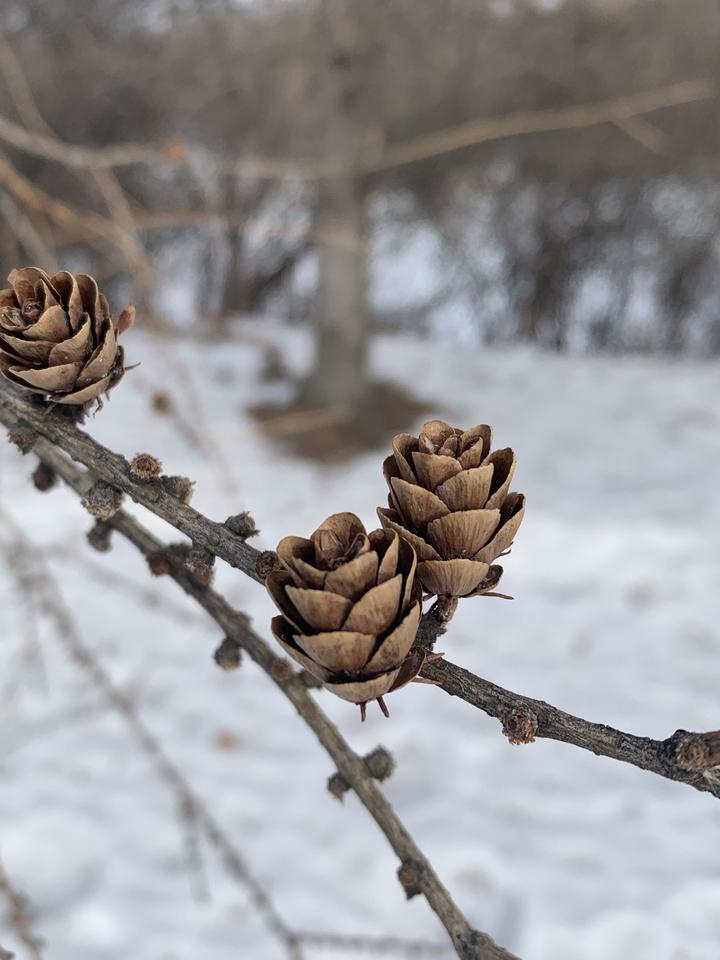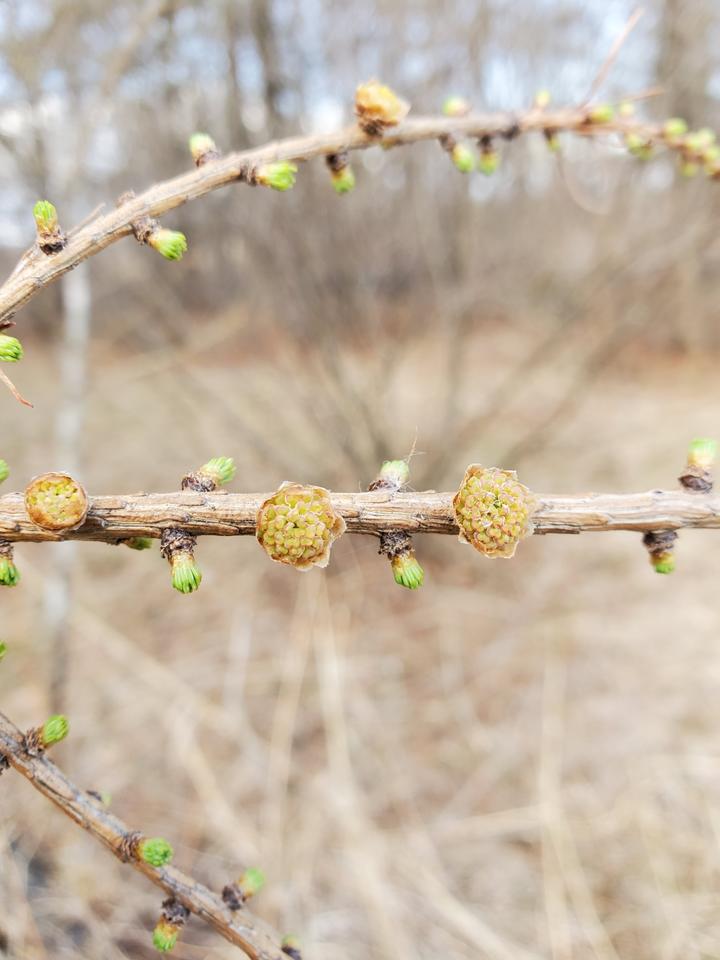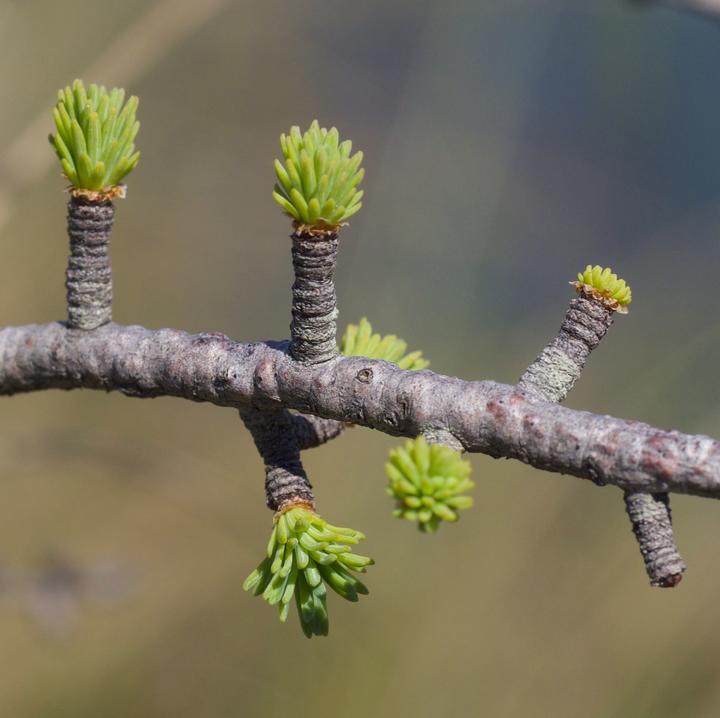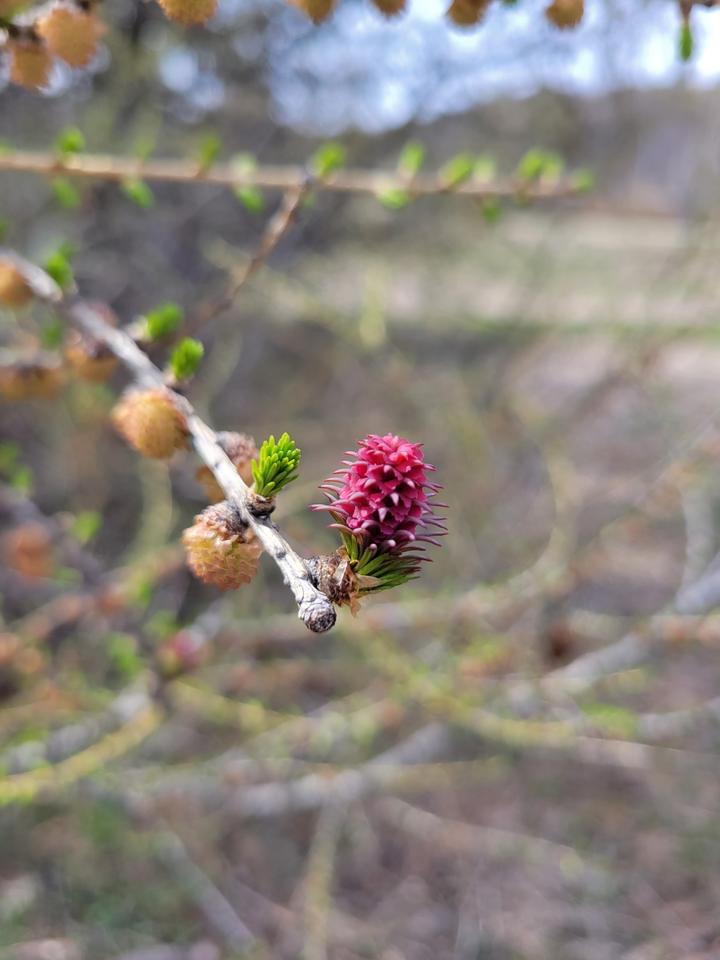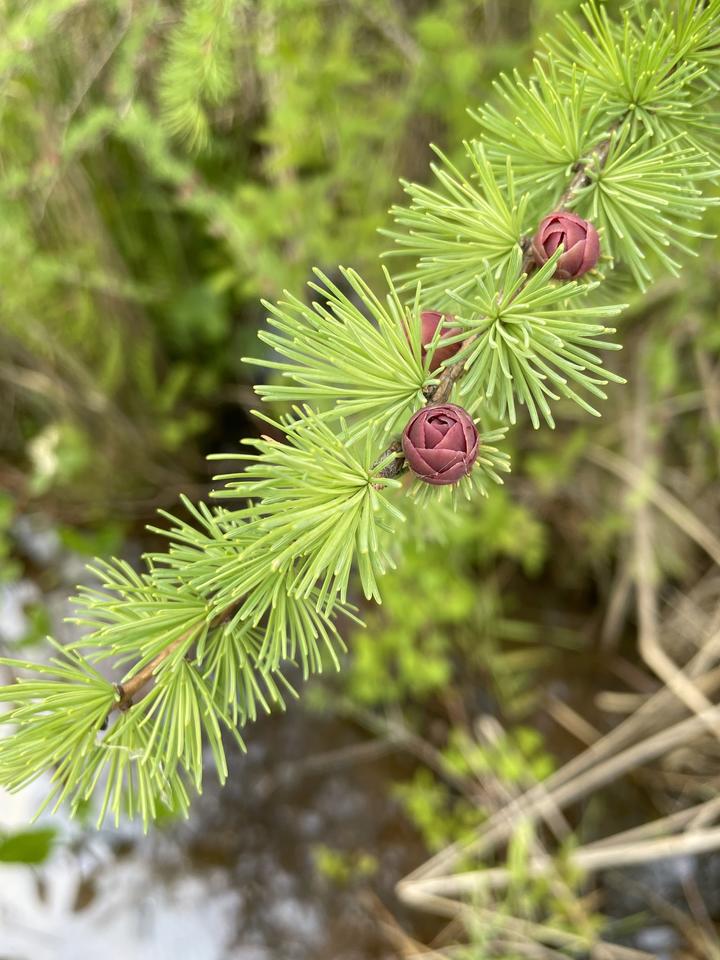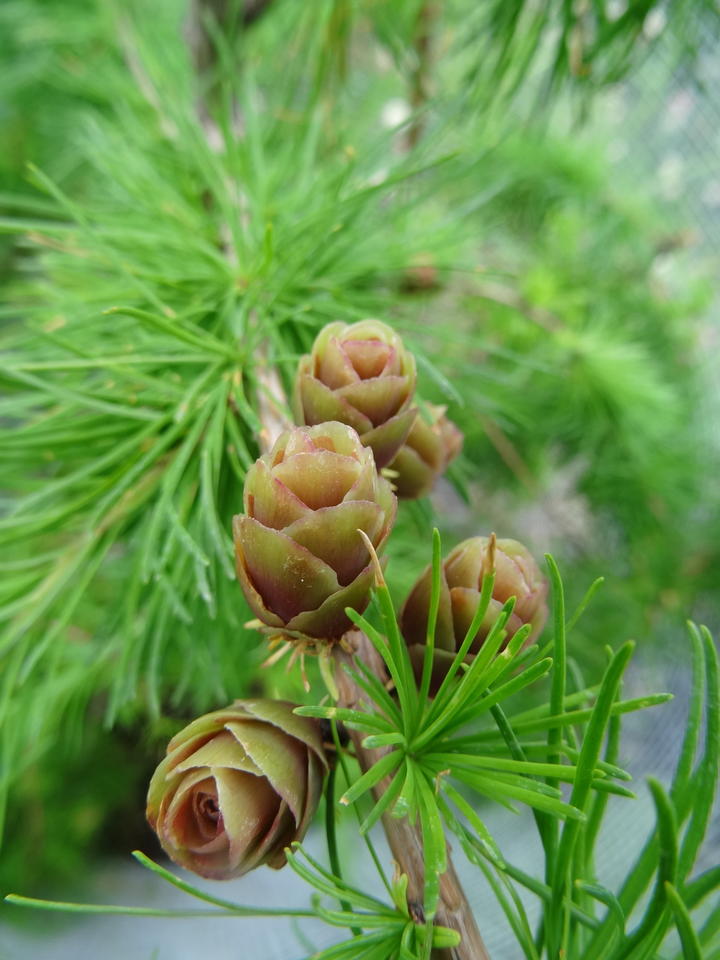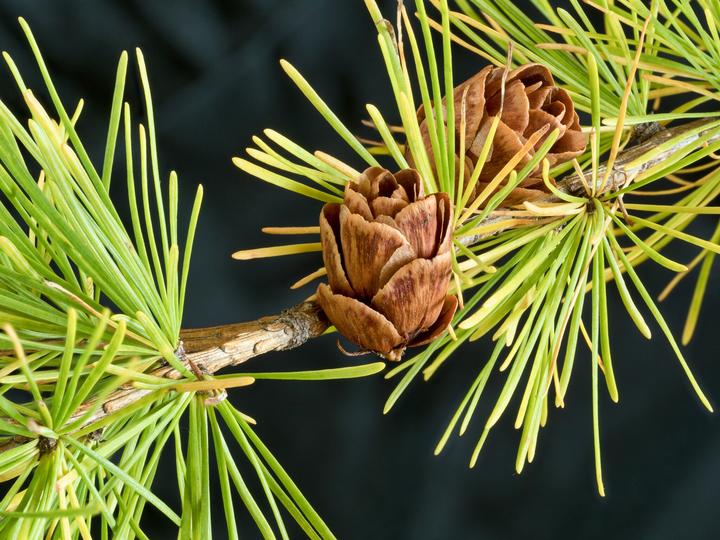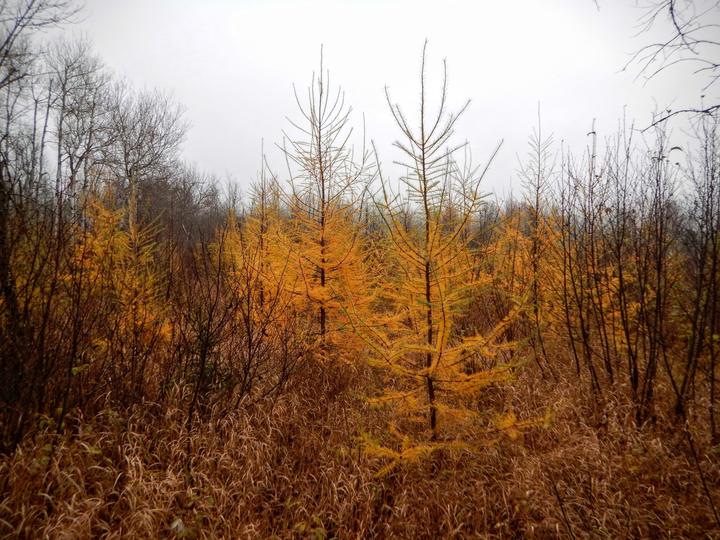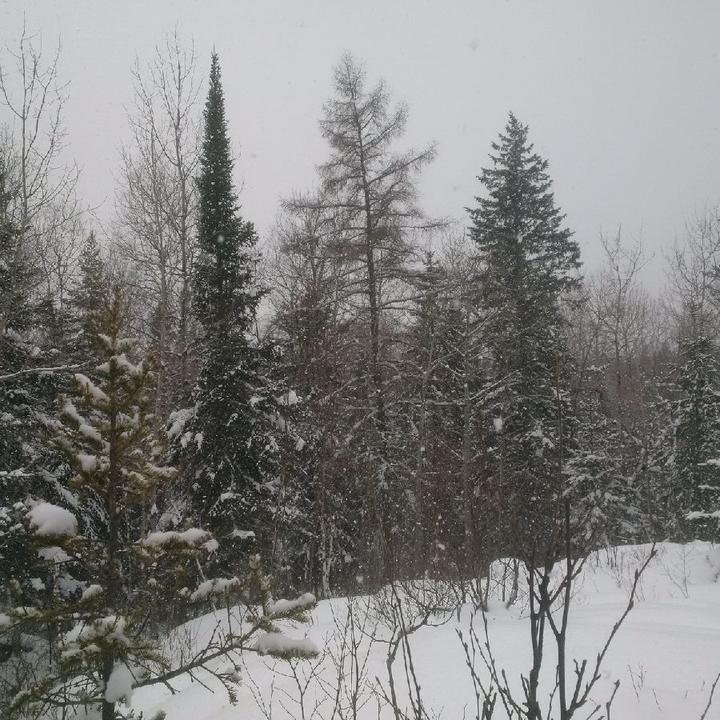More names for this tree
Anishinaabemowin: Mashkiigwaatig
The Dakota and Anishinaabe were among the earliest people to name Minnesota’s plants and animals, as well as to understand them in relation to Minnesota’s climate and seasons. Those original names are still in use, and several are included on the Season Watch website. However, complete translations were not available.
Latin (or scientific name): Larix laricina
The scientific community has a convention of assigning agreed-upon Latin names to every kind of organism. Using scientific names helps people communicate confidently about the same organism and organize lifeforms based on how closely related they are.
More common names: Larch, hackmatack
Page contents
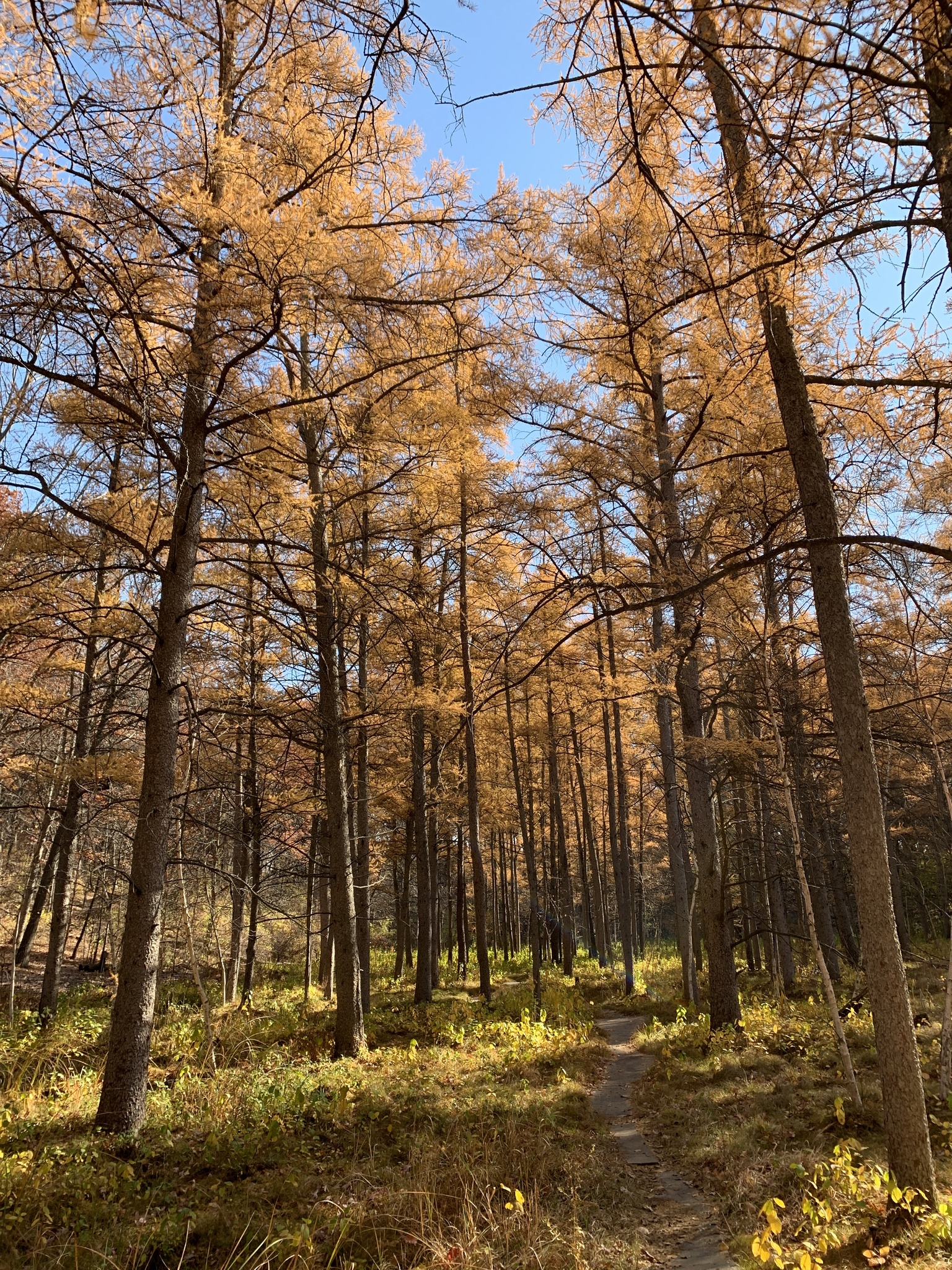
October 30, 2022, Hennepin County, Minnesota
Photo © makou012, some rights reserved (CC-BY-NC)
iNaturalist observation
About the American tamarack
- The American tamarack is a coniferous tree with a straight upright trunk that can reach heights of forty to seventy feet.
- Tamarack trees are commonly found in swampy forested areas of northern Minnesota, or in southerly cold swamp areas in hardwood forests.
- Its fruit are small cones that start out greenish or red and then become light brown when mature.
- The mature cones open up and release small winged seeds in the fall.
- Its needles turn deep yellow and are shed during late fall or early winter.
- The tamarack tree is the only Minnesota conifer that loses all its needles annually.
- Fun fact: The common name ‘tamarack’ comes from the Algonquin language meaning "wood used for snowshoes".
Visual guide to phenology
Watch for the appearance of needles and cones. Take notice of when needle buds break, needles change color, and cones develop.
Note to observers
This page explains general clues to watch for when observing American tamarack phenology. However, this page does not explain how to identify this plant or collect data in a standardized way.
- For help with identification, see Minnesota Wildflowers.
- For guidance on collecting data, see Nature’s Notebook.
Graphs and historical data
Note: The Orientation Center provides a map, as well as information on reading graphs; interpreting summary statistics, who collected the data and how; and how to download datasets for independent exploration.
Leaf budbreak
- Earliest: March 28 (occurred in 2012)
- Average: April 23
- Latest: May 12 (occurred in 2008)
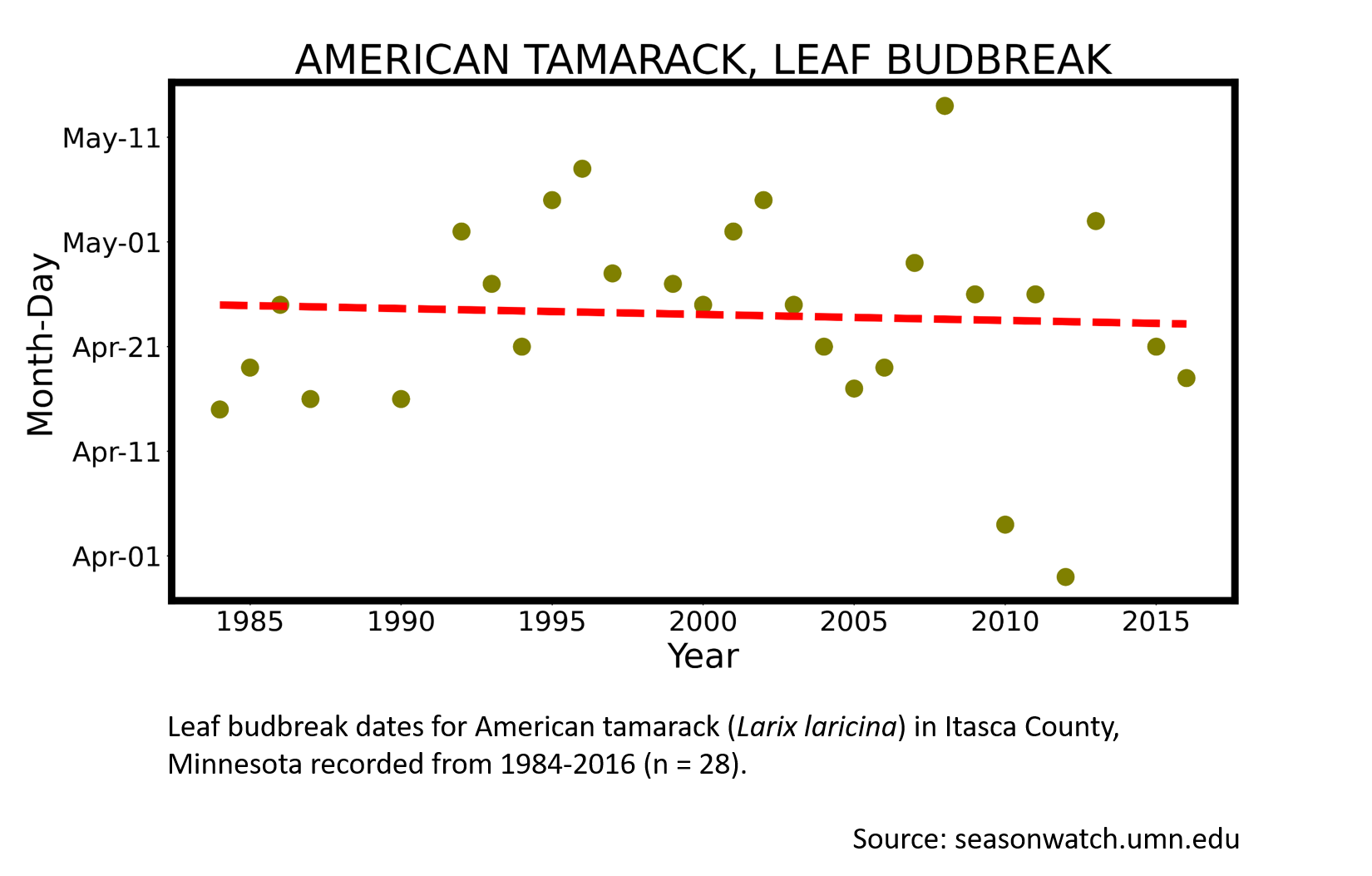
All leaves colored
- Earliest: September 23 (occurred in 2014)
- Average: October 10
- Latest: October 26 (occurred in 1997)
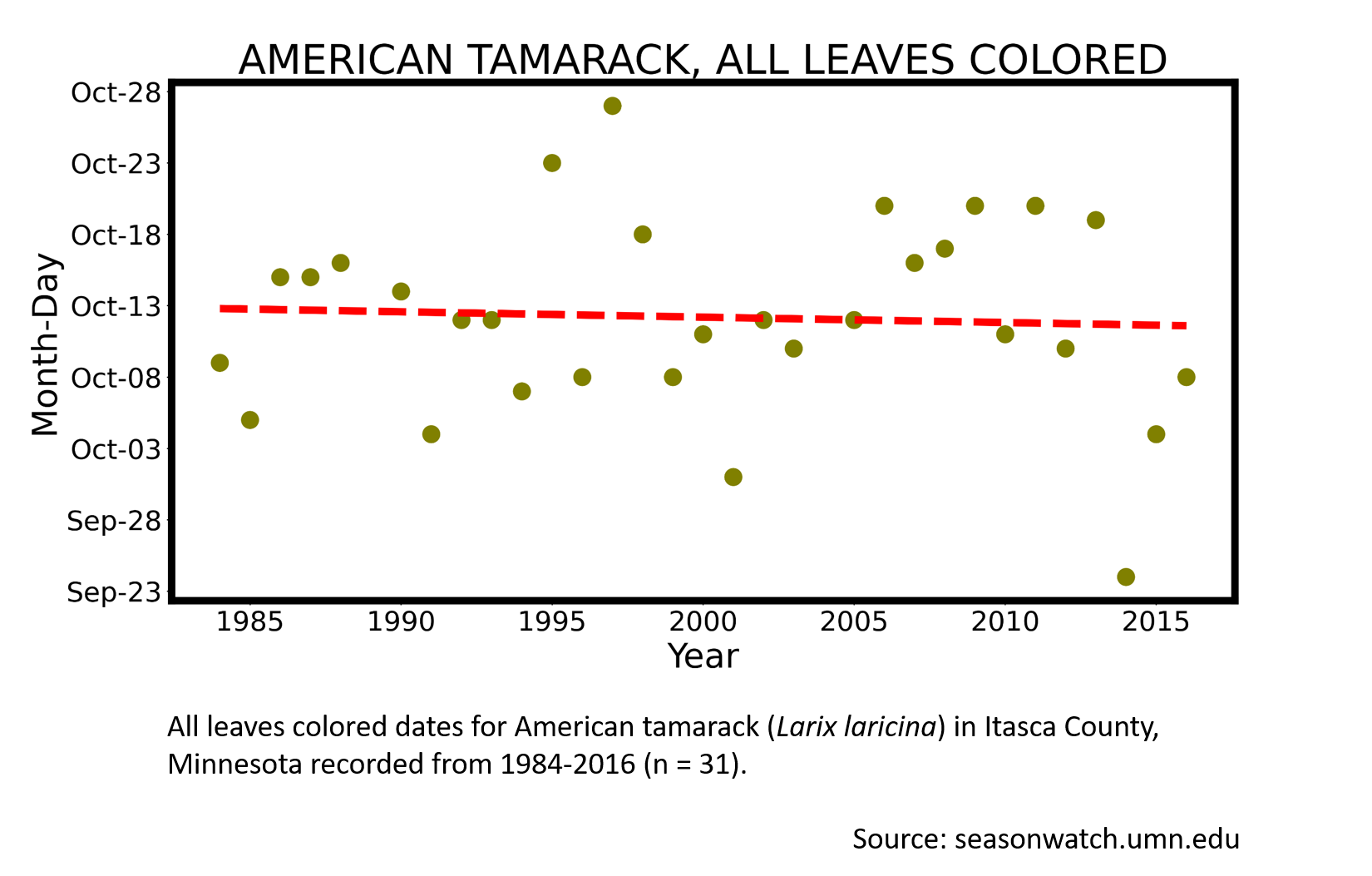
Download this dataset (.csv file)
First leaf fall
- Earliest: October 12 (occurred in 2001 and 2010)
- Average: October 18
- Latest: October 26 (occurred in 2013)
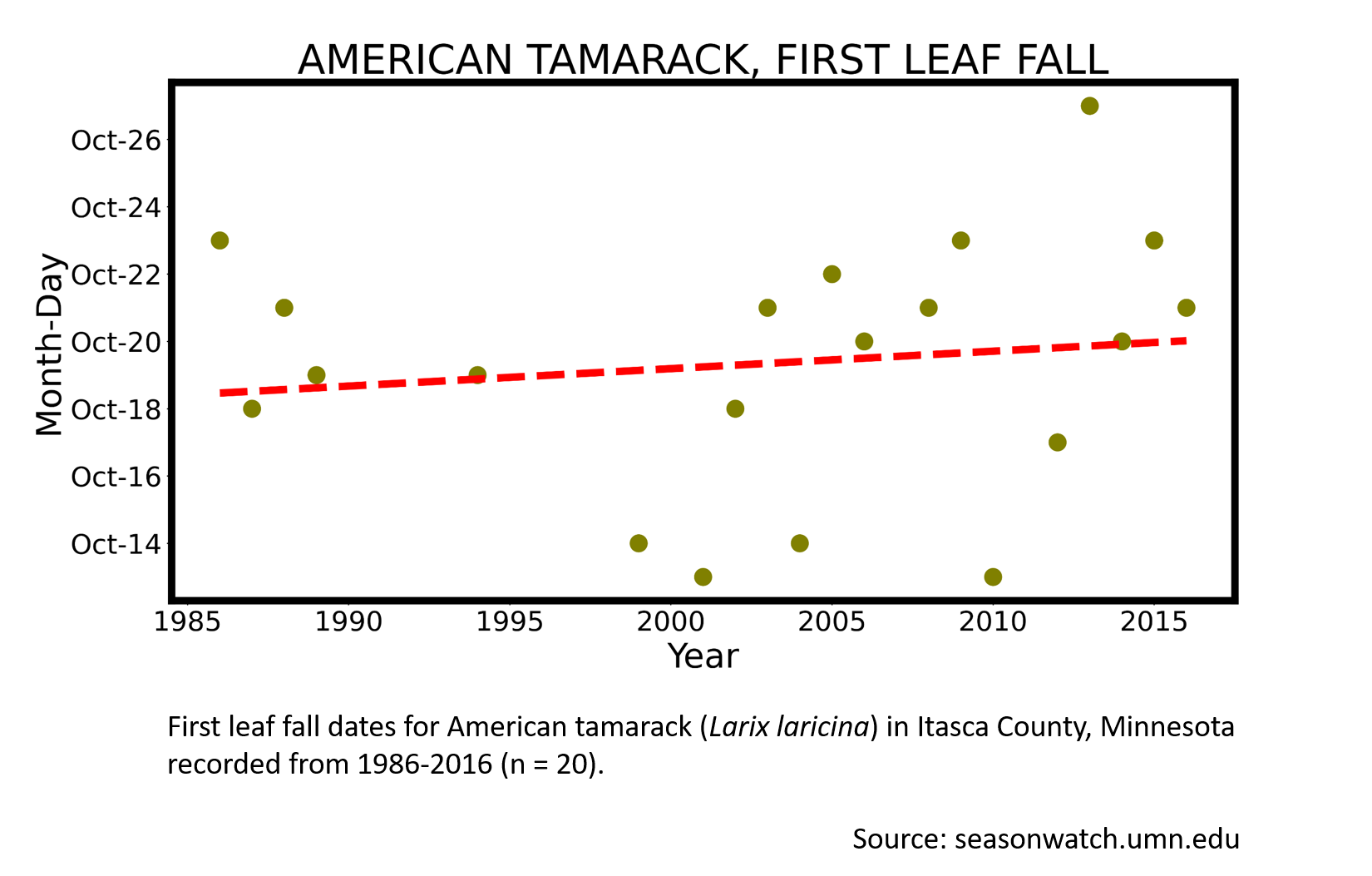
More resources
American tamarack (Larix laricina) in the Minnesota Biodiversity Atlas
American tamarack (Larix laricina) in Nature's Notebook
Cold winter temperature can accelerate the timing of spring budbreak, synopsis of a journal publication by Claudia Nanninga, Chris R Buyarski, Andrew M Pretorius, Rebecca A Montgomery (2017) in Tree Physiology 37: 1727–1738.
Keep exploring Season Watch
Keep exploring Season Watch
Co-author: Jayme Hogan, Minnesota Master Naturalist
